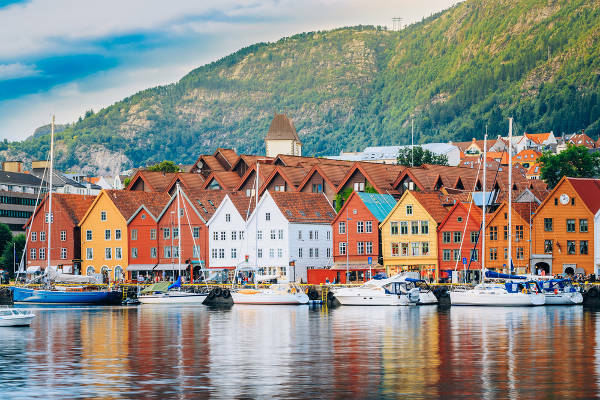HDI, acronym for Human development Index, is measure of a country's development, which assesses not only the economic but also the social aspects, considering that it is not just the economy that measures the advancement of a population. used as world parameter, the HDI makes it possible to compare the quality of life of each country, identifying its socioeconomic development and guiding the possible measures to be taken in relation to what is deficient.
Every year the countries are evaluated, an evaluation that makes it possible to United Nations Organization intervene, through the elaboration of humanitarian aid policies, in the territories that present this need.
However, it is noteworthy that, according to the United Nations Program for Human Development in Brazil (UNDP Brazil), the HDI should not be considered a measure of happiness or the indicator of the best place for live, as it does not take into account all the necessary aspects to reach this conclusion, as equity, sustainability, democracy, between others.
Read too: What is GDP?
Who created the HDI?
The HDI was created in 1990 by Mahbub ul Haq, Pakistani economist, in collaboration with Amartya Sen, Indian economist and award winner Nobel of 1998 economy. O UNDP — an organ of the United Nations that aims to promote the development of countries and end poverty — uses the HDI as a comparative measure to assess the member countries of the organization.
It is now one of the main indicators of the Human Development Report (HDR), considered by UN as an important instrument in the progress of human development in the world. This report is released national, global and annually.
→ What do you take into account?
A country's development is generally associated with its economic growth measured by its Gross Domestic Product, which refers to the sum of all goods and services produced during a given period, usually one year. However, this is not the only aspect to be analyzed to make this assessment. Thus, the HDI takes into account aspects that are related to quality of life, with three main ones:
Education: refers to the level of knowledge of the population. For this, the rates of literacy, schooling and the level of education that refer to the average years of schooling for an adult (from 25 years old) and the expected years of schooling for each kid. This result shows how public policies in each country act in education in order to promote access to school and reduce school evasion.
Health: it refers to the quality of life. For this, life expectancy at birth is observed, taking into account the number of early deaths conditioned on access to health, with regard to treatments, medications and vaccines, to the causes of child mortality and also the rates of violence.
Income: it refers to the possibility of a dignified standard of living. For this, the GDP per capita is observed — which is the Gross Domestic Product divided by the number of inhabitants in the area, indicating what each person produced. This is an indicator of each person's standard of living.
also know: What is population density?
How is the HDI calculated?

O HDI calculation is done annually and it is a average between the three dimensions considered in the analysis: income, health and education, each dimension having the same weight in the calculation to be performed. For each of them, an index is created, which selects the minimum and maximum values, between 0 and 1, in order to arrive at an average.|1| For example:
→ Health
To arrive at the average life expectancy index for a given place, the maximum and minimum values are given. Look:
Suppose the maximum life expectancy value is 80 years and the minimum 20 years. There is the real life expectancy of this place, for example 72 years. Then calculate:
72-20 divided by 80-20 which gives: 0.866
→ Education
To arrive at the average of the schooling index for a given place, the maximum and minimum values are given. The maximum value is 100% of the literate population, and the minimum is 0%.
Suppose the literacy rate for this place is 78.6%. Then calculate:
78.6 - 0 divided by 100 - 0 = 0.786
And so it is done with the other indices of this dimension, such as the schooling rate and the level of education.
→ Income
To arrive at the average of the decent life index through the GDP per capita, the calculation is made according to the logarithm of income. This calculation is more complex in maximum and minimum dollar amounts. Therefore, it is necessary to verify the per capita GDP of the country. Look:
Suppose per capita GDP is $8000, the maximum is $40,000, and the minimum is $100. It is calculated on a scale of logarithm, reaching an approximate value of 0.700.
Thus, arriving at the averages of each dimension, the average between the three results, thus obtaining the Human Development Index. The closer to 0 the result, the worse the quality of life in the country. That is, there are deficiencies in the area of health, education and/or income. The closer to 1, the better the quality of life in the country, showing that public policies as well as the economy are doing well. The HDI is classified into: low, average, high and very high.
Read more:What are age pyramids?
HDI in Brazil
The Brazilian HDI, according to the ranking presented by the UN in 2018, is 0,759, being in the 79th position among 189 countries, a result classified as high human development. Among South American countries, Brazil presents the fifth best HDI. However, the country has been stagnant in this position for three years, evidencing both economic and social difficulties.
In 2018, the country showed improvements in terms of health and income and remained stagnant in terms of education. The average years of schooling for Brazilians is 7.8 and has been maintained since 2016. The average expected school year for an adult is 15.4 years. In 2016, the life expectancy of Brazilians was 75.5, rising to 75.7 in 2018, which represents an improvement in public health policies.
In addition to the country's Human Development Index, there is also the Municipal Human Development Index (IDHM), which also analyzes three dimensions: life expectancy, education and income, as well as the global HDI. The former analyzes the quality of life in Brazilian municipalities according to the country's reality, pointing out regional challenges as well as their potential.
According to the IDHM, the 100 municipalities with better quality of life are found mainly in the Southeast region and on South region from the country. According to UNDP Brazil, São Caetano do Sul, in the state of São Paulo, leads the ranking with an IDHM of 0.862. The last position is occupied by Melgaço, in Pará, with an IDHM of 0.418. To learn more about the subject, read our text: Brazil HDI.
world HDI

The world HDI is led by countries with high human development. The first ten countries in the ranking are on the continents European and Asian. Countries with low human development are in Oceania, Africa and Asia.
Read more:European countries
See the list with the best and worst HDIs in the world:
high human development |
Low human development |
Norway - 0.953 |
Niger - 0.354 |
Switzerland - 0.944 |
Central African Republic - 0.367 |
Australia - 0.939 |
South Sudan - 0.388 |
Ireland - 0.938 |
Chad – 0.404 |
Germany - 0.936 |
Burundi - 0.417 |
Iceland - 0.935 |
Sierra Leone – 0.419 |
Sweden – 0.933 |
Burkina Faso |
Singapore - 0.932 |
Mali - 0.417 |
Netherlands - 0.931 |
Liberia - 0.435 |
Denmark - 0.929 |
Mozambique – 0.437 |
Grades
|1| Calculation of human development indices. To access, Click here.
by Rafaela Sousa
Geography teacher
Source: Brazil School - https://brasilescola.uol.com.br/geografia/idh-indice-desenvolvimento-humano.htm
